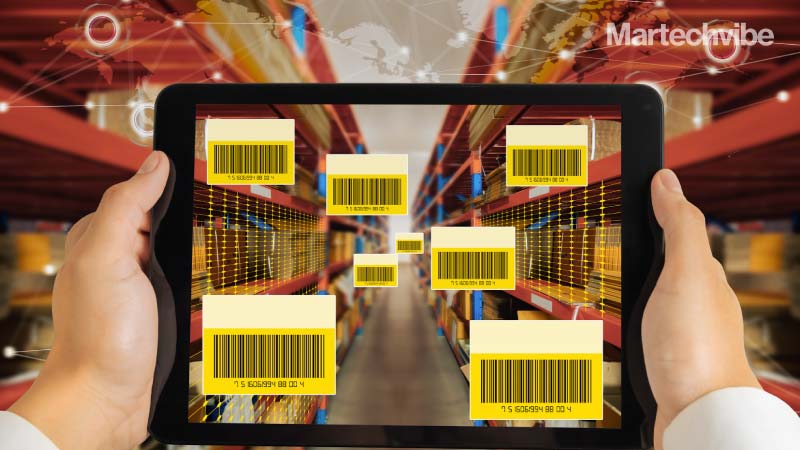Transforming SCM Industry With AI-based Predictive Analytics
With the supply chain stabilising, many manufacturers are returning to normal operations with more robust technological capabilities. Nearly half of supply chain leaders increased their spending on innovative technologies and systems during the pandemic, including predictive analytics. In addition to optimising inventory levels and improving delivery times, predictive analytics can also increase sales and reduce […]
Topics
What to Read Next
- Martechvibe Launches the Marquee Awards to Celebrate Breakthrough Digital Campaigns
- Top Marketers 4X More Likely to Use AI, Consolidate Tech
- Roku and iSpot Bring Outcome-Based Optimisation to Streaming
- PMG Expands Influencer Marketing Capabilities with Acquisition of Digital Voices
- PayPal Ads Launches Transaction Graph Insights & Measurement

With the supply chain stabilising, many manufacturers are returning to normal operations with more robust technological capabilities.
Nearly half of supply chain leaders increased their spending on innovative technologies and systems during the pandemic, including predictive analytics.
In addition to optimising inventory levels and improving delivery times, predictive analytics can also increase sales and reduce costs by combining statistical algorithms with internal and external data. Together with artificial intelligence (AI), these advanced systems are the key to more accurate and timely forecasting in the future.
We can predict weather patterns, consumer behaviours, and gas prices using machine learning and historical data. But what happens when historical data is no longer predictive? Let’s understand it through the Covid-19 pandemic scenario, a disruptive event that shattered the global economy and skewed predictions. The pandemic caused a global economic shock that supply chain leaders could not even predict.
For example, during the pandemic, companies producing PPE kits or toilet paper were unprepared for the increased demand. Neither were the raw material suppliers. While this was happening, small businesses, restaurants, and service providers had no reliable way to adjust inventory and operations based on demand.
In addition, consumers’ behaviour and purchasing patterns were not predictive during the pandemic. Due to anomalies in consumer behaviour during 2020, businesses are still experiencing difficulty forecasting, while the debate goes on whether or not to incorporate this data into predictive models.
Outlying factors will inevitably skew the data. But the more data you have, whether internal or external, the more accurate your predictions will be when combined with AI and predictive analytics. The challenge may be knowing where to look.
Predictive analytics + AI = Better Supply Chain Management?
In the aftermath of a pandemic, predictive analytics models and AI are essential for improving forecast accuracy. This means having up-to-date data on every resource. Natural disasters or unexpected shipping delays, for example, may result in a shortage of certain raw materials in the plastic supply. AI systems may be able to flag likely events in advance, resulting in more informed decision-making.
By 2026, AI is expected to grow to a $309 billion industry, and 44 per cent of executives report decreased operational costs due to implementing AI. You can leverage AI in your supply chain to improve predictive analytics.
Inventory Management
Millions of dollars are lost each year due to inventory overstock and understock, and real-time inventory visibility was vital in preventing these problems. AI can enable you to optimise your inventory management beyond simple reordering when you sync real-time data with it. Monitoring technologies, such as internet-of-things (IoT) devices, can provide real-time alerts about low inventory levels so you can restock products before they run out. Using AI-based solutions, you can gather data over time and identify patterns, which will help you plan inventory more efficiently.
To begin, you need data to analyse. You can collect all relevant data points from basic barcode scanning to RFID and other warehouse automation technologies. Using an AI-powered analytics engine, you can learn about inventory movement and sales patterns and optimise workers’ roles when you feed data from every single barcode scan into it.
Delivery optimisation
Using predictive analytics to ensure on-time deliveries has become more common in the past few years. But what happens if there is an accident, traffic jam or severe weather? These, and other unforeseen circumstances, could create roadblocks in the delivery or shipment of goods. This is where analytics and AI come into play. It will provide future insights into dealing with and preparing for these situations by analysing these events. The use of route optimisation software and AI can enable real-time rerouting based on previous factors. Soon, AI algorithms might determine the best delivery time, potential delays, and other factors affecting delivery.
In addition to route optimisation, IoT devices can collect real-time sensor data from trucks to optimise operational aspects of delivery. In addition, this technology can detect sudden stops, load imbalances, and object shifts in transit, which will help to inform future decisions.
The recent pandemic proved the value of predictive analytics in conjunction with AI. The collection of data in the supply chain is crucial, but it is useless without action. There is more data than ever before, but AI is necessary to turn it into predictive and actionable insights. It’s time to start capturing the data points and implementing the appropriate technology on your journey towards fully implementing predictive analytics utilising AI.
If you liked reading this, you might like our other stories
How to Leverage Social Media Advertising
Get Your Data Machine Learning Ready









































































































